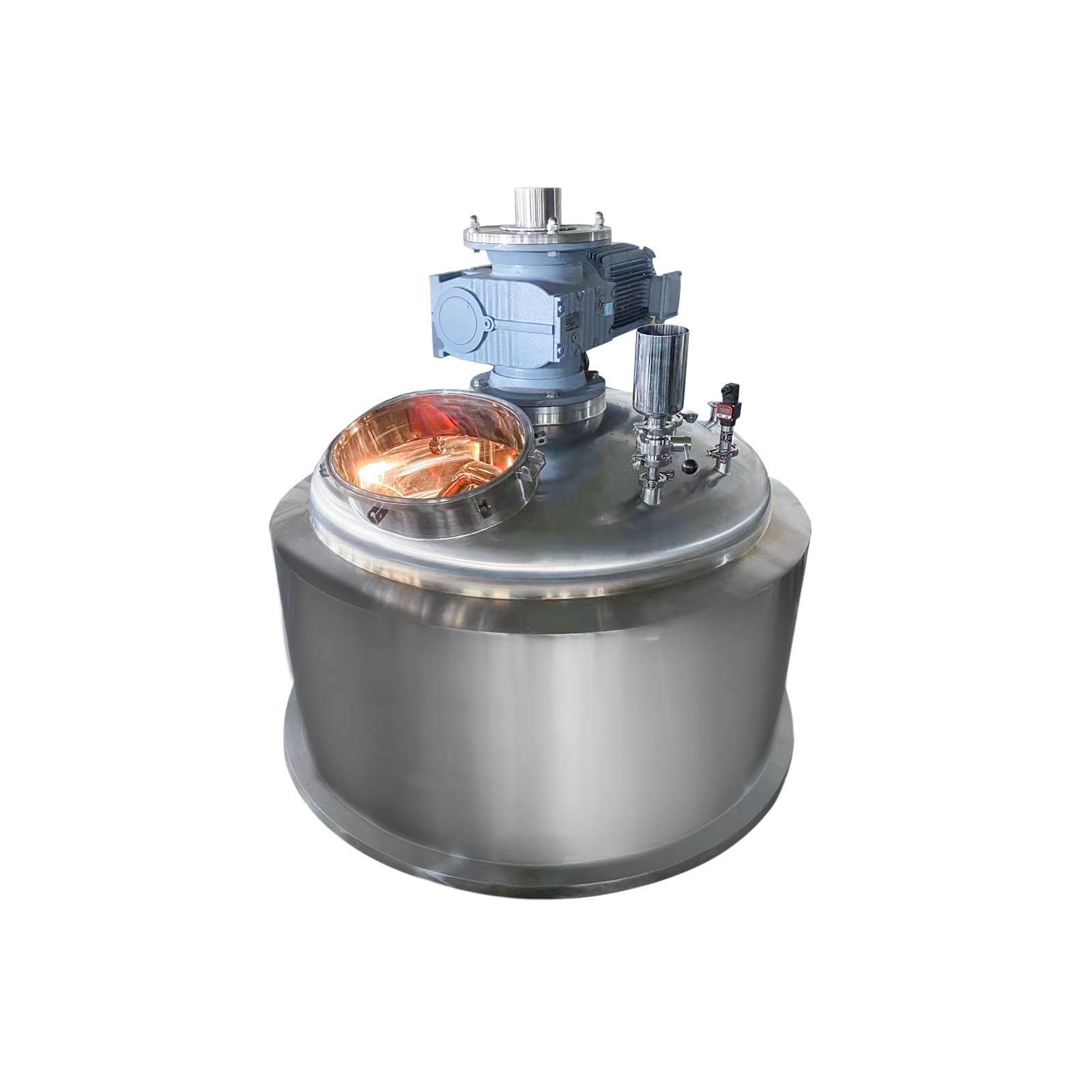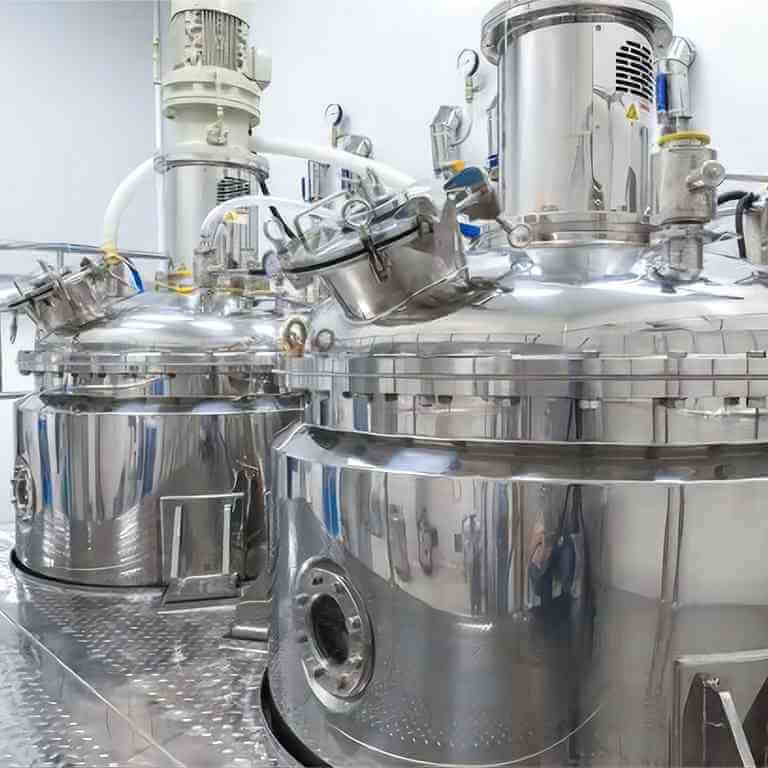

High Pressure Reactor
High-pressure reactor: used in chemical synthesis, catalytic reaction, and other fields
Material
glass, stainless steel (316, 304), carbon steel, others
Capacity (L)
10-10000+
Mixing system
anchor, paddle, frame and others
Heating system
electric heating, oil heating and others
The High-pressure reactor is mainly made of the kettle cover, the kettle body, the strong magnetic coupling stirrer, the high temperature, and high-pressure needle valve, the lower stirring part, the inner cooling coil, the temperature measuring part, the liquid lower pipe, etc.
Request a quoteHigh-pressure reactors are widely used in various catalytic reactions, high-temperature and high-pressure synthesis, hydrogenation reactions, gas-liquid two-phase, liquid-liquid two-phase, exothermic reactions, composition testing, stability, corrosion testing, fine processing, supercritical reactions, catalysts Applications such as evaluation and development are mainly distributed in fields such as chemistry, pharmaceuticals, polymer synthesis, and metallurgy. The high-pressure reactor is a combination of a reaction vessel, reaction condition control system, and experimental equipment.

High-pressure reactor installation process
1. Check whether there are any flammable and explosive items inside and outside the kettle and whether there are any items that are not conducive to air circulation.
2. Check whether the valve and the inside of the kettle are clean;
3. Close all valves of the high-pressure reactor kettle (except the exhaust valve), and then start feeding. After the feeding is completed, cover the kettle lid (Note: Use even force when rotating the nut, and ensure that the two diagonal screws are tightened to each other to prevent air tightening. leakage);
4. Close the exhaust valve. Check the air tightness of the device, close all valves of the high-pressure reactor kettle, and cover the kettle lid (note: use even force when rotating the nut, and ensure that the two diagonal screws are tightened to prevent air leakage after tightening); open the air inlet valve and pass in Nitrogen reaches 1MPa, close the air inlet valve, observe the pressure changes, and confirm whether the equipment is leaking.
Hydrogenation reaction in a high pressure reactor
1. Check whether the valve is closed tightly;
2. Point the exhaust hose to an open and ventilated place;
3. Install the hydrogen pressure-reducing valve (note that the wiring port of the hydrogen pressure-reducing valve is installed backward) and the nitrogen pressure-reducing valve. After installation is complete, use soapy water to check for air leaks (if there is air leakage, please reinstall);
4. Use a vacuum to extract air from the liquid surface at the exhaust port;
5. Open the inlet valve of the high-pressure reactor kettle, then open the nitrogen pressure reducing valve, fill in nitrogen to increase the pressure in the kettle (P=0.2Mpa), close the nitrogen pressure reducing valve, close the inlet valve, keep it for about 2 minutes, and check the pressure gauge. Check whether the pressure on the pot is downward, and listen for air leakage from the valve and lid. If there is no leakage, slowly open the exhaust valve. When the internal pressure reaches 0.01Mpa, close the exhaust valve;
6. Repeat the above steps once;
7. Open the air inlet valve of the high-pressure reactor, open the hydrogen pressure reducing valve, charge hydrogen to the required pressure, close the air inlet valve, close the hydrogen pressure reducing valve, and then adjust other parameters to the required state to allow it to react.
Control sampling of high-pressure reactors
1. Observe whether the high-pressure reactor data is normal every half hour. If the pressure decreases, hydrogen must be replenished;
2. When the hydrogen gas in the hydrogen bottle cannot be completely discharged and a certain pressure (P≈0.01Mpa) must be ensured, it should be discarded and replaced with a new bottle.
3. Take samples. Slowly open the exhaust valve, set the pressure in the kettle to 0.2Mpa, close the exhaust valve, slowly open the sampling valve until the reaction liquid emerges, close the sampling valve, take a sample, and then clean the sampling port to allow the non-reactive liquid to flow out. Flammable substances remain.
Hydrogen release from high-pressure reactor
After confirming that the reaction is over, slowly discharge the hydrogen to the bottom (note that when there is slight pressure inside, close the exhaust valve to prevent oxygen from entering), open the inlet valve, rush the nitrogen to 0.2Mpa, close the inlet valve, and then slowly open the exhaust valve. Bleed out the gas mixture inside and reintroduce nitrogen as soon as possible. After venting for 3 times, use a vacuum pump to extract the gas from the liquid surface, open the exhaust valve and sampling valve, and start discharging from the bottom valve (note that since it contains oxygen, chemical reactions are easy to occur). Please prevent self-igniting substances such as Pa/c, RaneyNi, and so on. overflow outside the container). If there is a spill, please dry it immediately with a wet towel, put it in a bucket with water, and then destroy it with a small amount of dilute acid. After unloading, immediately close the bottom valve.
Unloading steps of high-pressure reactor
The kettle should be cleaned immediately after discharging, and the following steps should be followed before cleaning:
Inject the reaction solvent into the kettle from the exhaust valve. After removing most of the residue, pour it into the water half kettle and stir for 10 minutes. Then open the kettle lid and clean the inner wall of the kettle;
When cleaning, the kettle lid and sampling valve must be cleaned. At the same time, when there is water in the kettle, a small amount of nitrogen must be filled;
For a reactor that is not in use temporarily, it is best to add 70% volume of clean absolute ethanol to soak it in the reactor without tightening the screws.




